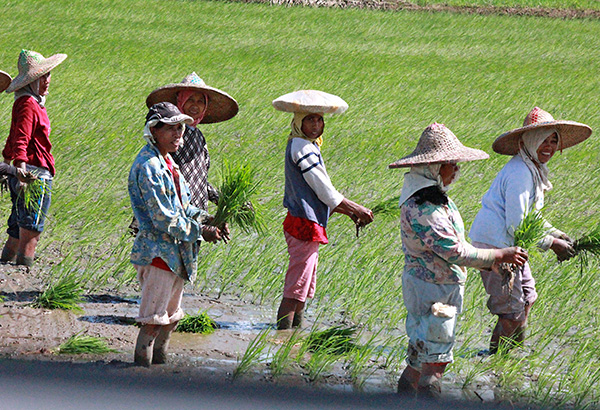PH to work for first Pan-Asia trade deal

Manila Standard | 17 December 2016
PH to work for first Pan-Asia trade deal
THE Philippines will shift gear in efforts to carry through a free trade deal with members of the Association of Southeast Asian Nations along with its six major trading partners when the country takes over the chairmanship of the 10-nation regional bloc next year.
In a media briefing, Trade Secretary Ramon Lopez said the country was working towards closing the negotiations on the Regional Comprehensive Economic Partnership with other members of the Asean next year.
“We all look forward to a very good series of meetings in Asean, especially bringing to conclusion the Regional Comprehensive Economic Partnership that we in Asean are all working for because that will include [Free Trade Agreements] with six partner countries of Asean,” Lopez said.
“You know RCEP will involve Japan, China, Korea, Australia, New Zealand and India. Combined population would account for one-half of the world’s population. Combined economies would account for one-third of the world’s economy,” he added, citing the benefits of a revitalized trade under the China-led RCEP.
“So it’s really an important regional grouping for us in Asean, especially Philippines being part of this Asean RCEP. And after several years of discussion, I think we have a good chance of getting to a conclusion and coming to an agreement by next year.”
With the United States becoming more protectionist under a Donald Trump presidency and given President Rodrigo Duterte’s foreign policy pivot towards a regional integration, his economic managers signified it was likely they would shelve plans to join the US-led Trans-Pacific Partnership in favor of the Regional Comprehensive Economic Partnership, which includes China, India, Japan, Korea, Australia, and New Zealand—the countries with which the Asean already has free trade agreements.
As the world’s first pan-Asia free trade deal, the RCEP boasts a list of impressive statistics, like covering almost 30 percent of global gross domestic product and roughly half of the world’s population.
Unlike the TPP, Lopez said the RCEP would be of importance to the country as part of the Asean, which accounts for over 20 percent of Philippine business, economy and trade.
“So it’s a big part of our economy, so it’s quite important that we really have that robust and vibrant trading arrangement, among the RCEP countries,” the Trade chief added, citing the reliance of over 50 percent of Philippine trade to RCEP member-economies.
With the Philippine chairmanship up next year, Lopez said the Philippines was trying to urge Singapore, and other Asean countries as well to “consider” signing up on the RCEP.
An online report by The Edge Markets quoted Citi analyst Kit Wei Zheng as saying the pivot to China within the Asean countries would continue to pick up speed.
In particular, Citi said Singapore would be the hardest hit among Asean countries as its estimates show that 8.4 percent of that country’s gross domestic product was exposed to the US, particularly in the services trade.
Vietnam would also be affected as it has an 8 percent exposure, followed by Malaysia with a 6.3 percent exposure, although the latter also relies heavily on China.
Even before an impending pivot to China, Asean has seen increasing FDIs from the Asian economic giant.
Finance Secretary Carlos Dominguez earlier said President Duterte made the right choice when he had apparently foreseen correctly the need to turn Asean’s attention toward China, the world’s second largest economy that wants to establish a larger economic presence in the Asia-Pacific region.
The RCEP was conceptualized about a decade ago but was launched only in November 2012. Its membership of 15 Asian countries account for almost half of the world’s population, almost 30 percent of the global GDP and over a quarter of the world’s exports.
In terms of merchandise exports, RCEP is larger than the TPP, as China’s exports of $2.3 trillion alone as of 2014 are larger than the combined exports of the US ($1.6 trillion) and Canada ($474 billion), the two lead members of the TPP.
The RCEP covers trade in goods and services, investment, economic and technical cooperation, intellectual property rights, competition policy, and dispute settlement, among other issues. It does not cover labor, environment and state-owned enterprises.





